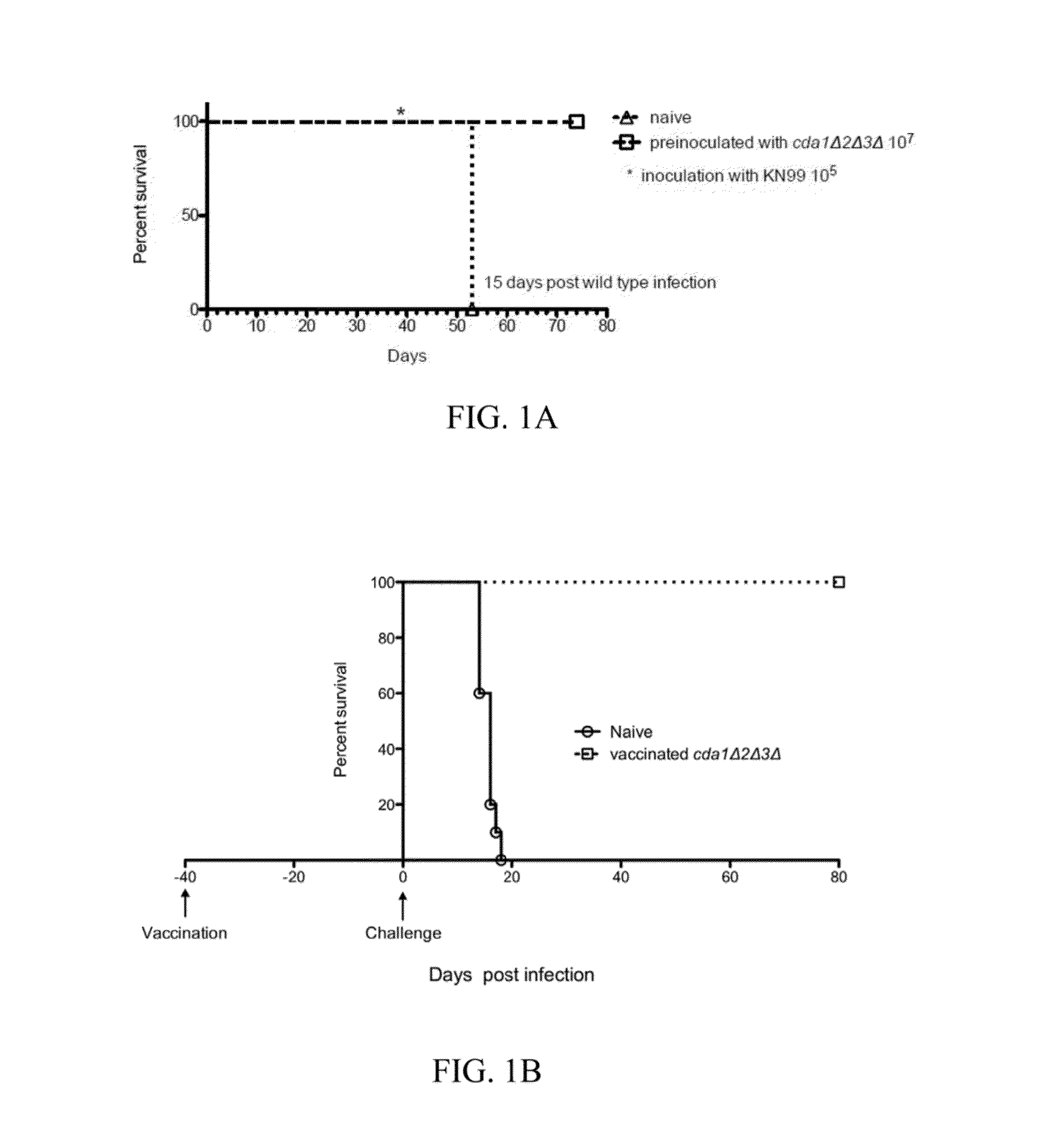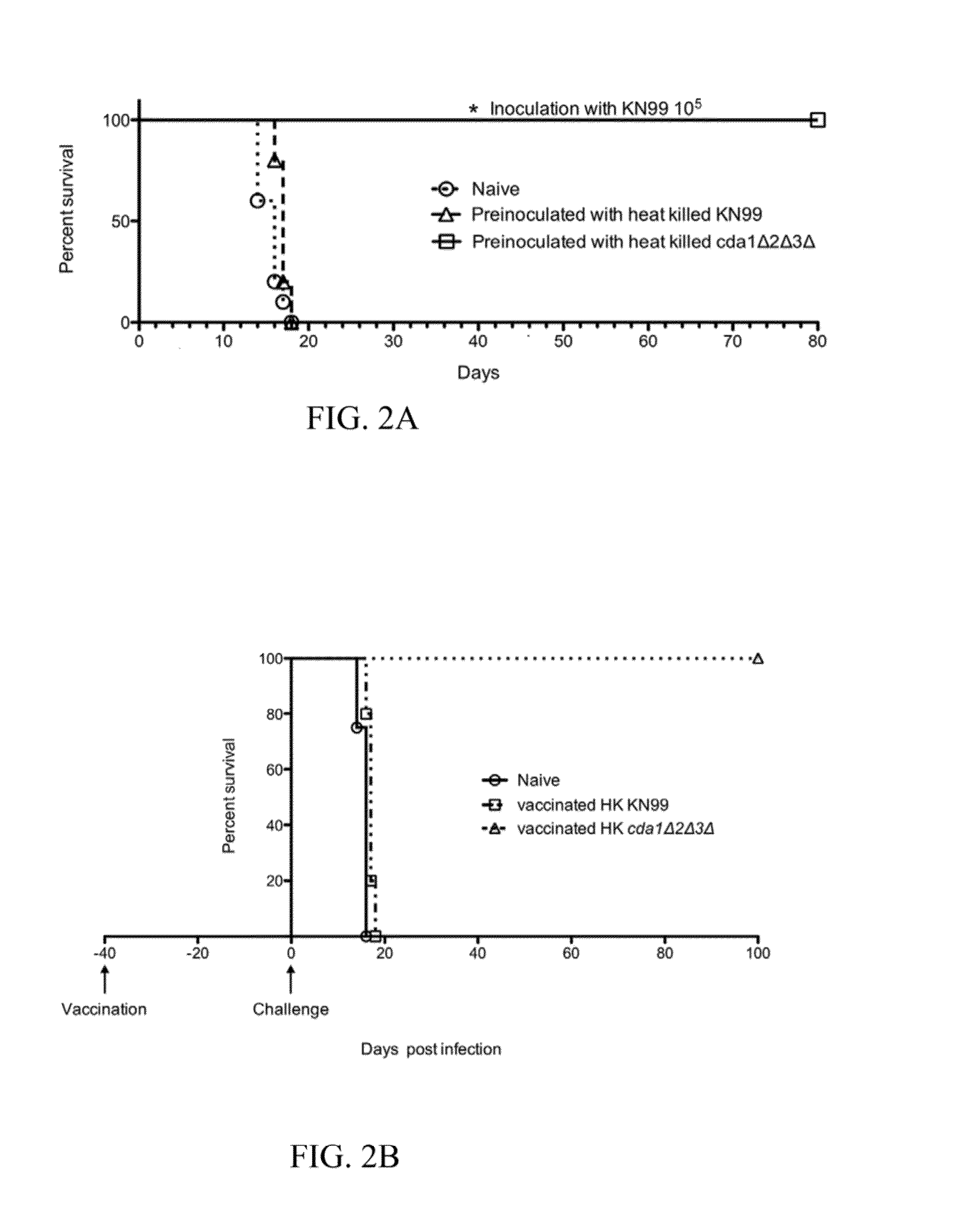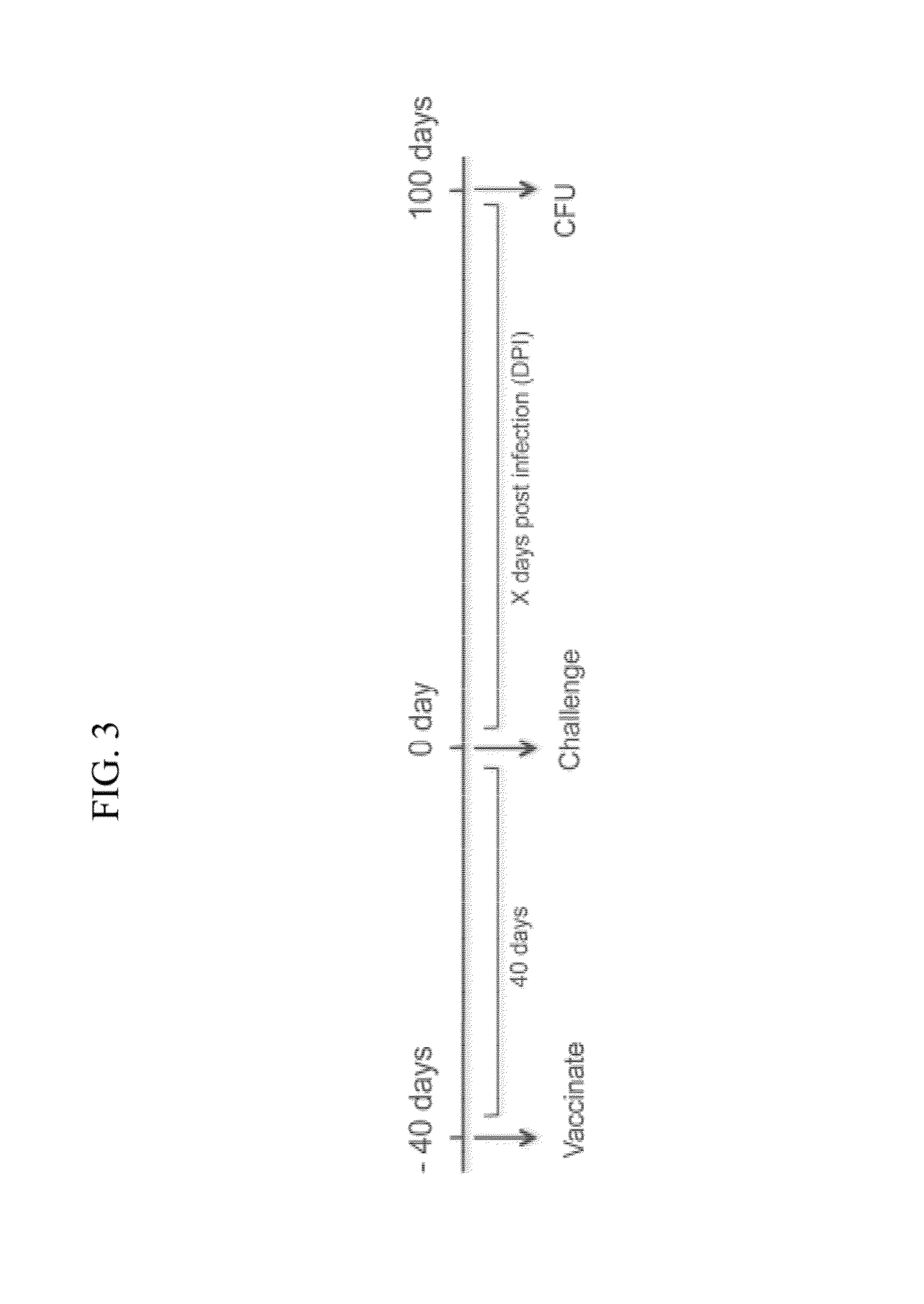Vaccination against Cryptococcus
a cryptococcus and vaccine technology, applied in the field of cryptococcus vaccination, can solve the problems of 600,000 deaths, ineffective antifungal effect, and invariably fatal, and achieve the effects of reducing or eliminating the ability of the fungus to produce chitosan, reducing or eliminating the expression of a functional cda gene product, and reducing or eliminating the expression of a functional cda gen
- Summary
- Abstract
- Description
- Claims
- Application Information
AI Technical Summary
Benefits of technology
Problems solved by technology
Method used
Image
Examples
example 1
[0071]This example illustrates that exposure of mice to a composition of the present teachings confers immunity to Cryptococcus infection in a model system.
[0072]In these experiments, illustrated in FIG. 1A, a group of 5 mice were inoculated through nasal inhalation with 107 Cryptococcus neoformans cda1Δcda2Δcda3Δ. These mice were challenged with 105 wild type (strain KN99) at day 38 post inoculation. At 70 days post inoculation, 100% of these mice were alive. In contrast, 100% of a control group of 4 mice that had not been inoculated with Cryptococcus neoformans cda1Δcda2Δcda3Δ were dead within 15 days after being challenged with 105 wild type Cryptococcus neoformans (strain KN99). These data demonstrate the effectiveness of inhalation exposure to Cryptococcus neoformans cda1Δcda2Δcda3Δ for conferring immunity to Cryptococcus neoformans infection.
[0073]In a second experiment, ten CBA / J mice were vaccinated with 107 of a live preparation of cda1Δ2Δ3Δ cells. After 40 days post vaccin...
example 2
[0074]This example illustrates preparation and use of heat-killed Cryptococcus deficient for chitosan production for conferring immunity against Cryptococcus infection.
[0075]In these experiments, a suspension of Cryptococcus neoformans cda1Δcda2Δcda3Δ in phosphate-buffered saline (PBS) is heated to 80° C. for 30 minutes. Test platings on nutrient medium are used to confirm the loss of viability of these Cryptococcus neoformans cda1Δcda2Δcda3Δ. Test mice are exposed to these heat-killed fungi as in Example 1. These animals can survive a challenge infection with wild type Cryptococcus neoformans. Such experiments can show that heat-killed Cryptococcus deficient for chitosan production can be effective for conferring immunity, with efficacy similar to that obtained using live Cryptococcus neoformans cda1Δcda2Δcda3Δ.
example 3
[0076]This example illustrates that inactivated Cryptococcus neoformans deficient for chitosan production is effective as a vaccine against C. neoformans infection in a mouse model system.
[0077]In these experiments, C. neoformans fungi (strain KN99), and C. neoformans cda1Δcda2Δcda3Δ subjected to heat-killing. For each strain, heating was applied until samples formed no colonies on standard nutrient plates. 5 mice were inoculated by nasal administration with 105 heat-killed KN99, and 5 mice were inoculated by nasal administration with 107 heat-killed C. neoformans cda1Δcda2Δcda3Δ. The inoculated mice and 10 naïve control mice were challenged with 105 wild type C. neoformans KN9940 days after inoculation. As shown in FIG. 2A, no naïve mice or mice treated with heat-killed KN99 survived more than 18 days after exposure to wild type C. neoformans. In contrast, 100% of mice inoculated with heat-killed C. neoformans cda1Δcda2Δcda3Δ survived more than 70 days after exposure to wild type C...
PUM
| Property | Measurement | Unit |
|---|---|---|
| Fraction | aaaaa | aaaaa |
| Fraction | aaaaa | aaaaa |
| Fraction | aaaaa | aaaaa |
Abstract
Description
Claims
Application Information
 Login to View More
Login to View More - R&D
- Intellectual Property
- Life Sciences
- Materials
- Tech Scout
- Unparalleled Data Quality
- Higher Quality Content
- 60% Fewer Hallucinations
Browse by: Latest US Patents, China's latest patents, Technical Efficacy Thesaurus, Application Domain, Technology Topic, Popular Technical Reports.
© 2025 PatSnap. All rights reserved.Legal|Privacy policy|Modern Slavery Act Transparency Statement|Sitemap|About US| Contact US: help@patsnap.com



